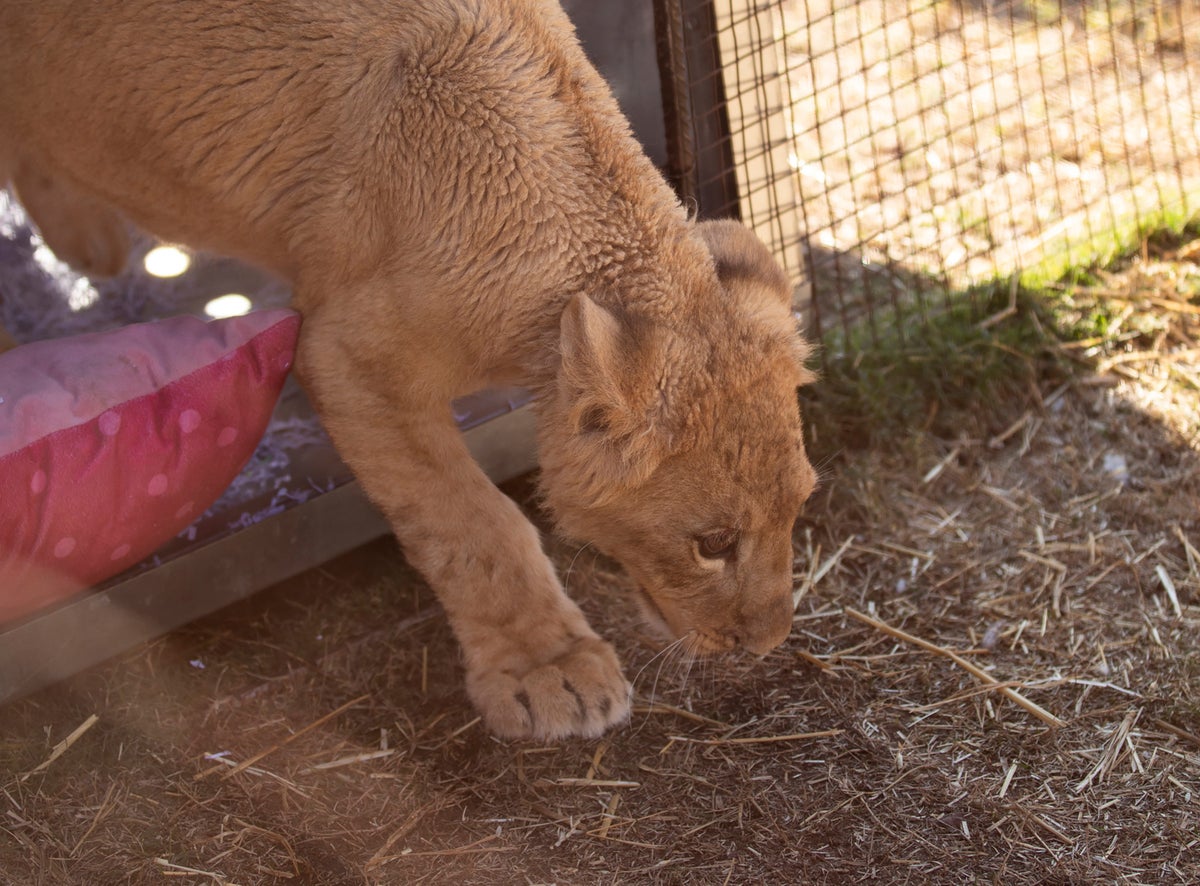
Support truly
independent journalism
Freya, a 6-month-old lion cub rescued from the wildlife trade in Lebanon, poked a curious nose out of her transport crate and sniffed the air. Satisfied, she took her first cautious steps in her new forever home in a sanctuary in South Africa.
Freya's relocation to the Drakenstein Lion Park is only a partial success story.
She will never live as a lion should in the wild. She has been given lifetime sanctuary at Drakenstein, which has taken in other lions from zoos and circuses in France, Chile, Romania and elsewhere. Some have terrible backstories of abuse, noted on placards at the sanctuary: Ares was blind and neglected when he was rescued. Brutus had been beaten hard enough to break his jaw.
But as Freya settles in at Drakenstein, animal welfare groups have again drawn attention to South Africa's contradictory position when it comes to the species that often symbolizes African wildlife.
South Africa, with an admirable reputation for conservation and ethical sanctuaries like Drakenstein, also has a thriving captive lion business where the big cats are bred for petting and other encounters but also for killing in “canned hunting” experiences or for the lion bone trade.
South Africa has special permission through the endangered plant and animal trade treaty CITES to export lion bones and skeletons, mostly to Southeast Asia to be used in traditional medicines. Canned hunting, where lions are chased down and shot in enclosures with no chance of a fair chase or escape, is also legal.
Animal welfare groups have pushed for the business of breeding lions in captivity to end. The South African government announced recently it plans to close down the industry and it's expected to take two to three years if there are no legal challenges.
It has been a stain on South Africa's conservation brand, said Audrey Delsink, the Africa wildlife director for Humane Society International, which was involved in Freya's relocation. She said it was important for people to realize that the cute cubs used for petting encounters at some South African parks — but not at Drakenstein — end up being big lions shipped off to be killed.
“They’ve been pulled from their mothers, they’ve been hand-raised for you to take selfies with and enjoy them, and then eventually the same lions are going to be shot for trophies in a camp from which they cannot escape, and then end up as a bag of bones,” Delsink said.
There are more than 300 captive lion facilities in South Africa, with more than 7,000 lions. That is double the number of lions in the South African wild. Campaigners against the business say it should be made more clear to visitors that the vast majority of South Africa's lions live in cages in the world's largest captive lion industry.
“We cannot pull the wool over tourists' eyes anymore,” Delsink said.
As for Freya, her rescuers hope that she will eventually bond and live in the same enclosure as young male cub Pi, who they believe is her brother and was brought from Lebanon in April.
Pi was illegally trafficked and owned by a man who used him to promote his TikTok account, said Jason Mier, director of Animals Lebanon, which rescued Pi and Freya. Pi often had his mouth taped shut when used for videos or selfies and was locked in a small cage at night. He was kept as a status symbol for his owner “to be able to show off I’m powerful, I have money, look at me,” Mier said.
Freya and Pi are the latest of nearly two dozen big cats rescued from various situations by Animals Lebanon. Some have come to Drakenstein, which doesn’t allow cub petting or any close encounters, but does welcome visitors to see the lions and learn about them.
Freya and Pi wouldn't survive if released in the wild, so the sanctuary is the best option for them. Those involved in Pi's rescue said they remember watching the cub experience grass under his paws for the first time at Drakenstein, even if it was in the enclosure he and Freya will likely inhabit for the rest of their lives.







